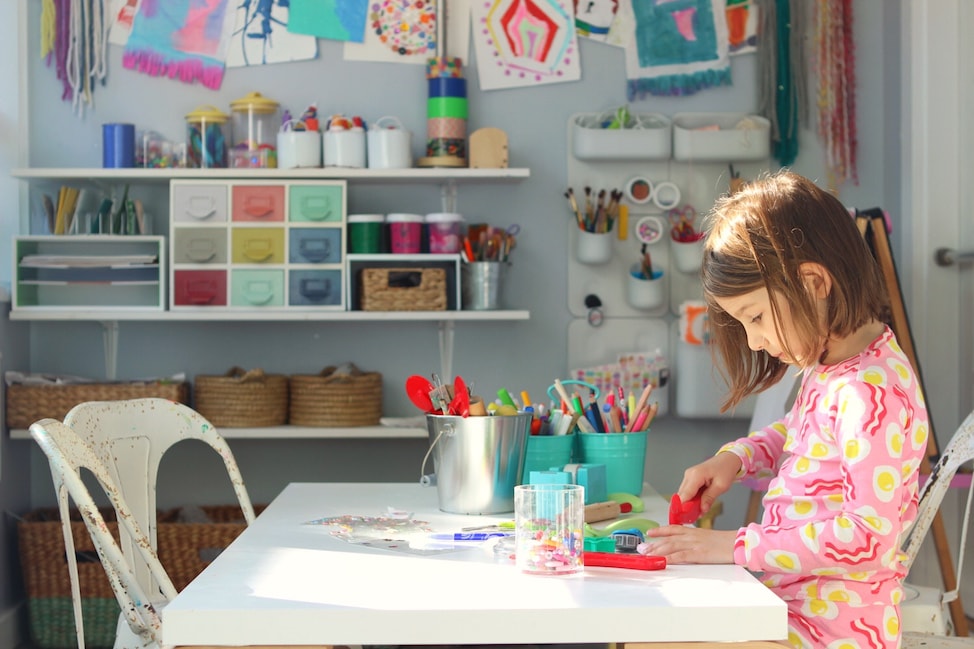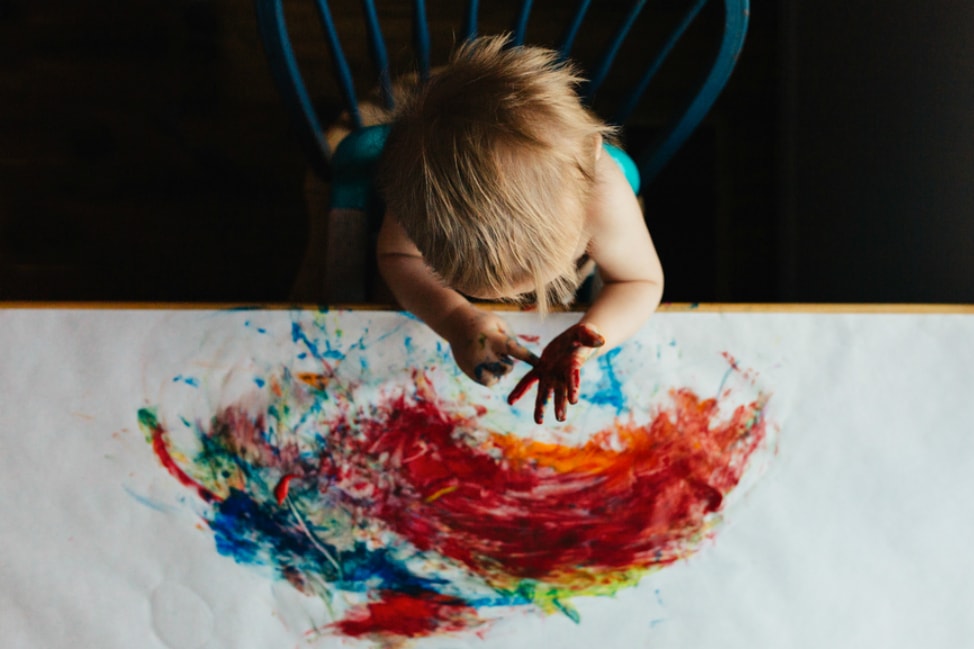“Every child is an artist until he’s told he’s not an artist.” John Lennon
Every time I read this quote, as a parent of a young child, it is powerful truth that I accept wholeheartedly.
Yet, as a child myself, I never believed I was an artist.
I thought that some people were creative and others weren’t.
But, over the last couple of years, I’ve found a passion for writing and it has reawakened a creative part of my soul that was hibernating for the longest time. Having spent most of my life immersed in science, I now find myself captivated by the life-giving importance of the arts.
Because the truth is that we are all creative; the only difference is whether or not we choose to use our creativity. Brene Brown suggests that unused creativity isn’t benign. When we deny ourselves a creative outlet, it has the potential to metastasize and transform into emotions like grief, rage and judgment.
Creative expression has the power to heal and give our souls room to breathe.
And as parents we have the power to welcome creativity into our homes, in whichever form resonates most with our kids, be it arts and crafts, dance, music, baking or woodwork; we are only bound by our imaginations. Let’s provide a safe space for imperfect and enthusiastic creative exploration and let’s dig a little deeper into a handful of ways that art fosters creativity and promotes healthy child development (and three of my favourite resources to help you implement it in your own family).
1. Art strengthens neural connections in the brain: in the first few years of life more than one million neural connections are made per second in the brain. This process is most efficient when a child’s senses are activated; art is a powerful way to do this as it has the ability to employ sight, sound, taste, touch and smell. From mixing paint colours to squishing play-doh between their fingers, art encourages the synapses in the brain to fire and wire as they experience situations that immerse their senses and ignite their creativity.
“The desire to create is one of the deepest yearnings of the human soul.” Dieter F. Uchtdorf
2. Art helps develop gross and fine motor skills: through it’s hands-on nature, creating art supports the development of fine motor skills. From holding a paintbrush to coloring with crayons and using scissors, art can help children improve their coordination and dexterity while performing a task they enjoy.
3. Art helps to preserve divergent thinking and creativity: Divergent thinking is the ability to envision multiple solutions to a single problem. Creativity researchers George Land and Beth Jarman administered a series of tests to 1,600 three- to five-year-old children; they found that a staggering 98% of kids scored at the “genius” level. But five years later when the same group of children took the tests, only 32% scored at this level, declining again to 10% at fifteen-years of age. Over 200,000 adults have taken this test and only 2% score at the genius level.
As a society we need innovative thinkers; people who can think outside the box and art helps preserve this ability. But, if Sir Ken Robinson is right (and I believe he is), that schools kill creativity, parents need to take charge, rally for change and provide a safe haven for the arts in our homes. According to the International Child Art Foundation, “Research indicates that a child who is exposed to the arts acquires a special ability to think creatively, be original, discover, innovate, and create intellectual property—key attributes for individual success and social prosperity in the twenty-first century.”
“Creativity is intelligence having fun.” Albert Einstein
4. Art helps in the development of decision-making abilities: the process of creating art gives children endless choices, while encouraging them to make decisions, think critically and problem solve. In art, children have the freedom to explore new ideas, take risks and welcome uncertainty, which can have a positive impact in other areas of their lives.
5. Art encourages language development, mindfulness and reflection: art gives children the opportunity to expand their vocabulary through the experience of new colours, shapes, textures and actions. Art also gives children a safe outlet to express emotions that they may not be able to articulate verbally, helping to make big feelings more manageable. Art also promotes greater mindfulness from a young age, providing an environment in which children can slow down, observe and contemplate at their own pace.
How to create an engaging art space in your own home
So, how do you encourage art in your kids’ lives on a daily basis? I’ve been asking myself the same question as we’re reimagining our son’s room and spaces throughout our home. So, I was thrilled when I discovered a handful of inspiring and practical resources to help parents, like me, welcome art into our homes. So, here are a few of my favourite art resources.
The Art Pantry by Megan Schiller

Megan is a designer, art teacher and mother who designs playrooms and kids’ creative spaces.
I’ve read Megan’s The Art Playroom cover to cover and can highly recommend it if you want to create a new art space in your home. It is an incredible and thorough step by step resource explaining how to create the perfect art space for kids. Megan’s passion jumps off the page and there are so many insightful soundbites of information from her many years of teaching art to kids that, as a not-so-creative parent, I am grateful for.
Tinkerlab by Rachelle Doorley
As Rachelle says kids are natural tinkerers. They experiment, explore, test and play; learning about problem-solving through questions and hands-on experiments. They don’t see lines between disciplines; rather, they notice interesting materials and ideas that are worth exploring.
In her book, Tinkerlab, A Hands On Guide For Little Inventors, Rachelle explores how children engage in creative experiments that help kids explore the world and ways in which parents can help make this happen. Tinkerlab helps parents understand and tap into this natural energy with engaging, kid-tested, easy-to-implement projects that value process over product.
The Artful Parent by Jean Van’t Hul
Jean Van’t Hul is the founder of The Artful Parent. Her book The Artful Parent: Simple Ways to Fill Your Family’s Life with Art and Creativity shares the tools and information parents need to encourage their children’s creativity through art, from how to repurpose and organize the piles of art created to how to talk to children about their artwork.
Jean shares more than sixty engaging arts and crafts projects that are developmentally appropriate for one- to eight-year-olds, From bubble prints to musical chairs art, these kids art activities allow children to explore art materials, techniques, and ideas as they grow more creative every day.
I’d love to know in the comments below, what are your favourite ways to welcome art into your home?

LOVE! Can’t wait to check these resources out, thank you!